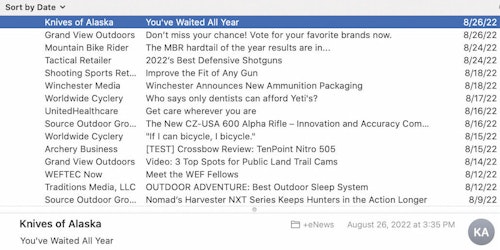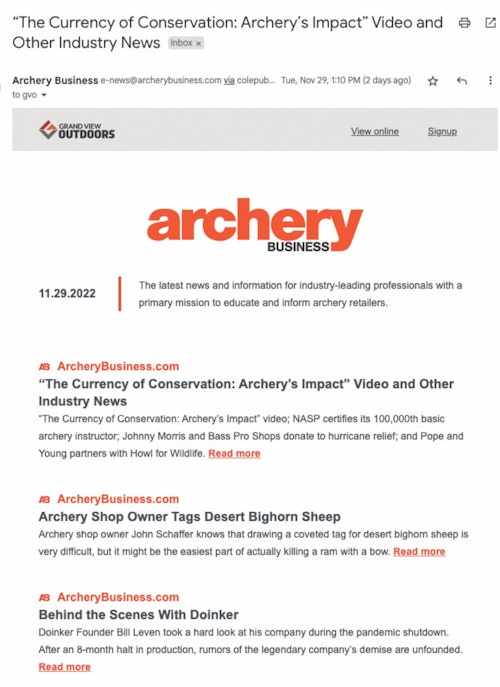The ability to get your message into a potential customer’s email in-box — email marketing — still remains the workhorse of any modern marketing effort. It’s nuanced and challenging but the reward is usually worth the effort. Here are seven tips to get you started or help you focus your efforts.
Capture emails constantly.
You may have a working list of emails but be sure to add to that list often. You can collect new email addresses in a number of ways: ask for them on your website (many website templates offer some kind of subscription manager); point them to your website subscription tool with your social media posts; put an “encourage a friend to subscribe” link in your email signature. If you run a physical storefront, provide a sign-up sheet at the checkout counter and ask every customer who enters the store to be sure to sign up. In other words, think of every way possible to gently and professionally ask for permission to record an email address. Also, where you can, tell what you’ll be sending via email — usually this includes coupons or offers but also should include some helpful insights about a product or service. Don’t be afraid of asking on multiple occasions for people to consider subscribing; but always be ready to explain the benefit of subscribing.
Use an email marketing tool.
As you capture email addresses, put them into an email marketing tool such as Constant Contact or MailChimp. Tools like these provide a great place to manage email addresses and, of course, the messages that get sent out to the email addresses. But the tools also provide built-in readership data, keeping you informed on who is opening your email messages, who is clicking the links you provide, and more. Moreover, the tools often provide professional-looking templates in which you can build each email message, easily adding text, graphics, links and more. Other features of a good email marketing tool include scheduling — allowing you to create emails in advance that get sent on a certain day/time.
Use a short, punchy subject line and a good From address.
Email addresses and good content won’t do you any good if your intended reader never opens the message. The key is to use a short, punchy subject line. “Short” means just a few words, or as few as possible. “Punchy” means something verbally catchy, fun, intriguing, etc. Also, consider using subject line hooks such as the word “Inside:” followed by a short description of the email content. The “Inside:” causes a reader to think something along the lines of “Oh, there’s something inside this email.” It sounds a bit weird if you think too long on it, but just consider your own email in-box and all the subject lines in front of you. Which ones catch your eye? Some email marketing research indicates that seeing “Inside:” (or “Look!” or something similar) as a part of a subject line would be a draw that would set your subject line apart from all the others.
Similarly, set up your email From address (the email address that shows up in the From or Sender line in an email in-box) to be professional and personal. Don’t use, for instance, “donotreply@yourdomain.com” — that sounds terrible and is not the outcome you want. Use a real person’s name or at least the company name. Be clever with this. Consider the From addresses you’ve seen in your own email: Would you be more intrigued to receive a message from donotreply@somedomain.com or CompanyNameInsider@companydomain.com or CompanyNameExclusives@companydomain.com.
Provide helpful content.
Minimally, marketing emails are new product and service announcements and the occasional deal or offer. Better marketing emails contain something useful to your customer: A link to a review of your product/service. A Q&A with a product/service expert. A short video explaining how to use a product/service. A list of tips and tricks related to a product/service. In other words, give your customers helpful, informative, engaging content that provides them with real intelligence. Entertain them and educate them. Do it fast and well but go for a more authentic rather than highly polished feel.
As an example, create a few one-minute how-to videos, with you or another employee as the star, using just your mobile device. Send these videos out one at a time to your readers and ask for feedback. This will be more helpful and engaging than hiring a video production crew to create a single professional video. It’s not that your home-grown video is unprofessional, but generally it will be regarded as more authentic. Professionally produced content has its place but today’s consumers generally are more interested in trustable authenticity than polished production.
Call your reader to action.
No matter what you send to your readers, be sure to provide a clear call to action. Most of the time, you’re probably looking for them to click over to your website or to an online store or to respond to a web form to provide some feedback. In any case, make the call to action clear and obvious. Your email marketing programs will likely have call to action (CTA) buttons and links you can use in your emails — use them. All your email marketing efforts are for nothing if your reader doesn’t know what to do after reading your email. The CTA usually follows the content you’re providing so be sure the content is an appropriate length (i.e., not too long) and the button or link is visually obvious and appealing. Again, a quick stroll through your own email box will show you how others do this. Watch for action words in an email such as “click here” or “buy now” or “order” or the like. Note how they are portrayed in the context of an email. And note just how much time it takes to actually get to a call to action and act on it.
Observe proper email etiquette.
Most email marketing templates will clue you in on proper email etiquette but the keys are to not subscribe anyone without their permission, to always offer the ability to unsubscribe with one click, and to always provide the company’s contact info. There are others but these three are important for building trust with your readers. It’s your job to woo readers with excellent content, allowing them to decide whether to join your email marketing program. And once they’re in, it’s your job to keep those readers with excellent content. Never spam anyone or make it difficult for them to leave your email marketing program.
Follow up judiciously.
Some email marketing programs provide advanced features that allow for followup emails to be sent to readers who take certain actions with the initial email you send. This, and other forms of email marketing automation, can be very useful for keeping readers engaged with customized responses. Following up can be done manually, too. In any case, follow up in such a way that makes you look thoughtful without being obnoxious, and knowledgeable without being creepy. You’ll learn what works with your customers (and if you don’t, ask them in an email how you can best serve them, what they want in an email, etc.). The goal of email marketing is to get them to act and/or to shorten the time and effort to get them connected to a real person in your company. As such, the opportunity follow up may be initiated by your email marketing efforts but completed outside of the context of your email marketing program — in person or on a call.








